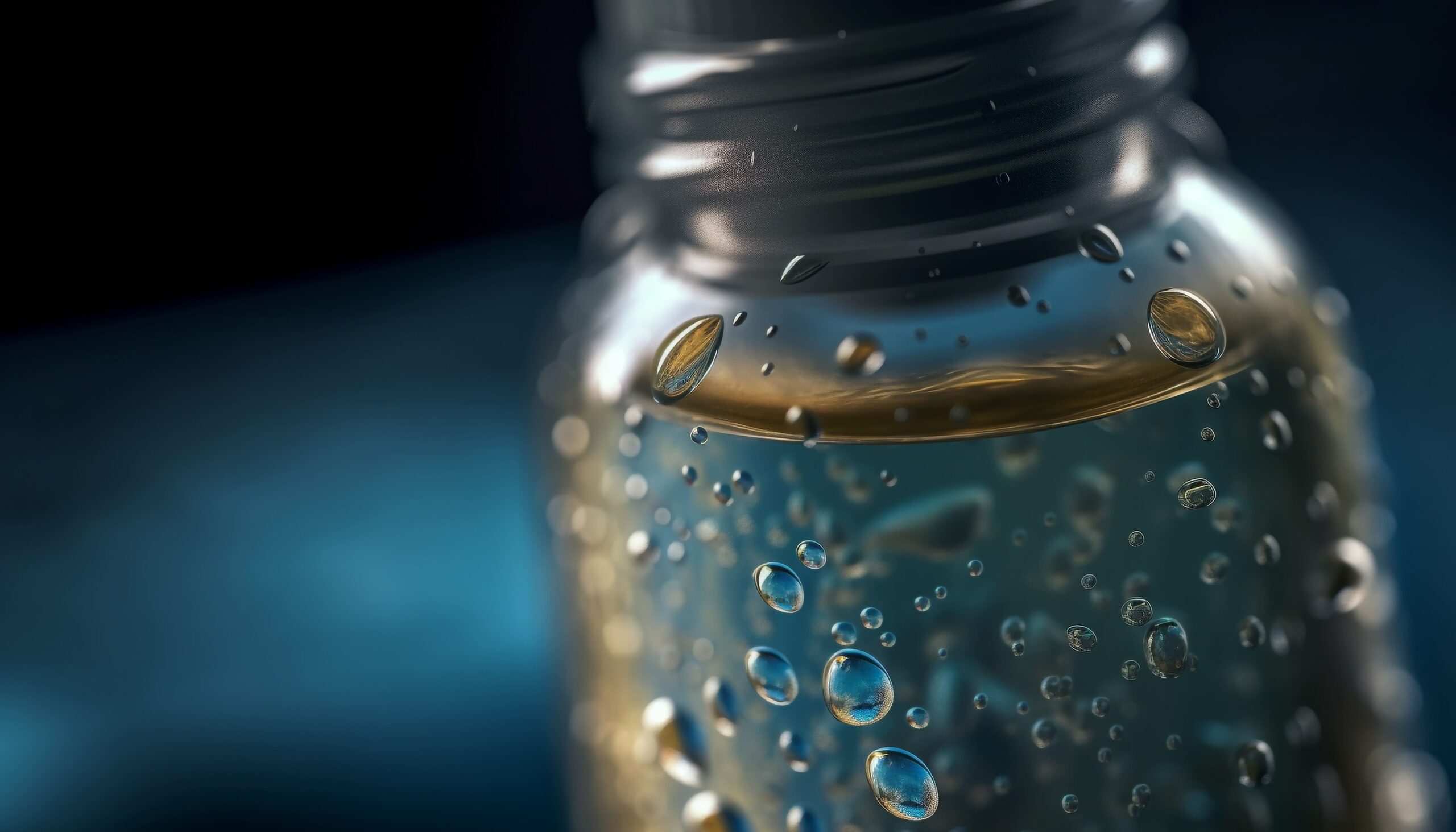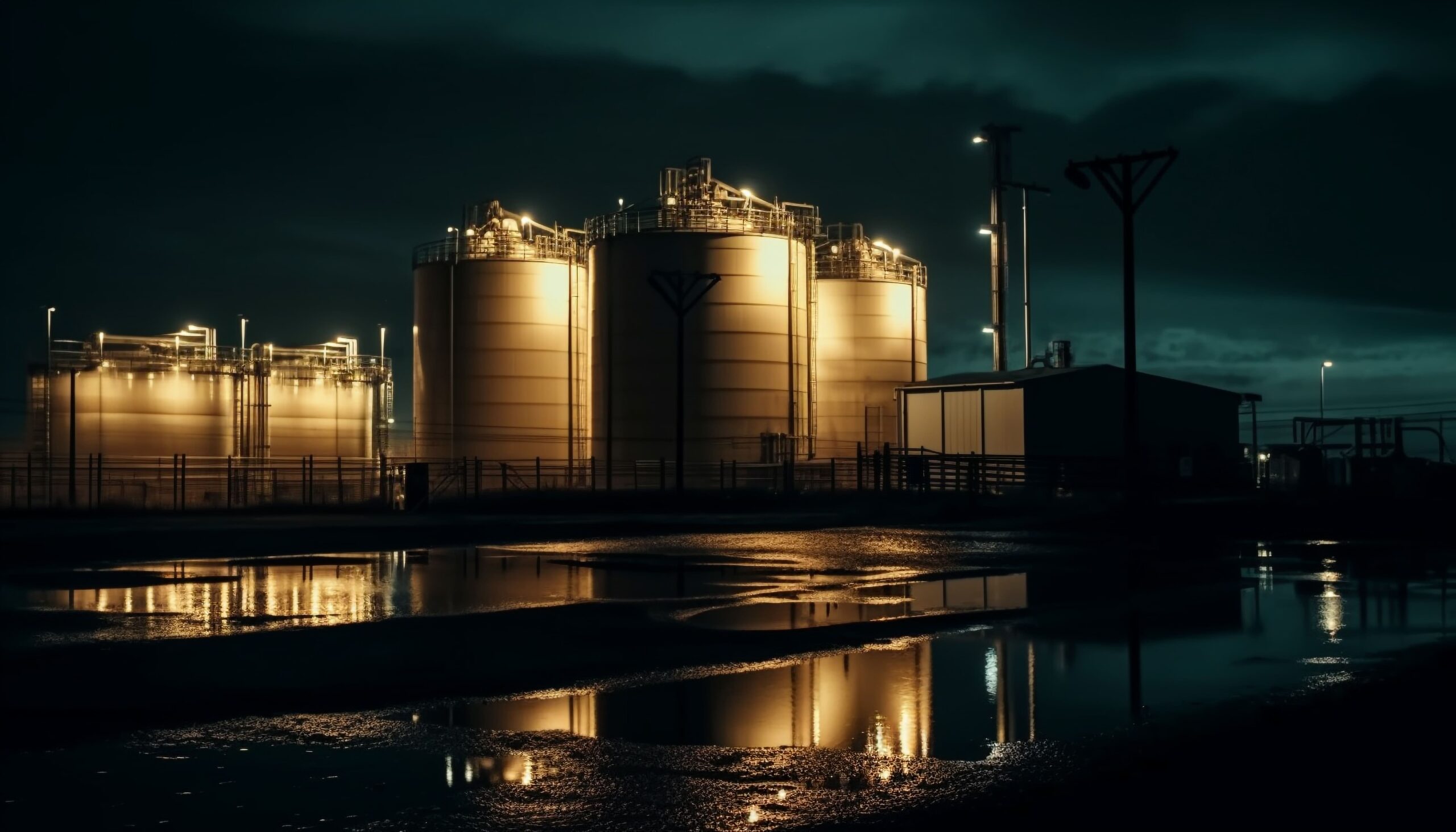Introduction
When it comes to formulating the perfect chemical solution whether for textiles, agriculture, cleaning, or coatings; wetting agents play an indispensable role.
They may not always be in the spotlight, but they’re the behind-the-scenes champions that help other ingredients do their job better.
Wetting agents are specialised surfactants that reduce surface tension, enabling liquids to spread more evenly across surfaces or penetrate solids more effectively.
This simple yet vital function enhances the overall performance of a wide range of chemical formulations.
From improving pesticide coverage in agriculture and ensuring uniform paint application in coatings, to boosting cleaning efficiency and enhancing dye penetration in textiles — wetting agents are essential across a diverse set of industries.
What Are Wetting Agents
Wetting agents, also known as surfactants, are chemical substances that reduce the surface tension of a liquid, enabling it to spread more uniformly across solid surfaces. By lowering this tension, they allow the liquid to better interact with and even penetrate; materials it would otherwise bead up on.
This is achieved by altering the contact angle between the liquid and the solid, which enhances adhesion and improves coverage.
Whether helping dyes seep into fabric, aiding pesticides to coat plant leaves, or enabling cleaners to break through grease, wetting agents play a key role in ensuring that chemical formulations perform efficiently and consistently across various applications.

How Wetting Agents Work
Wetting agents work by targeting one of the most fundamental properties of liquids i.e. surface tension.
Wetting agents reduce the cohesive tension, allowing the liquid to spread out rather than form droplets. This change also alters the contact angle between the liquid and the surface; a smaller contact angle means better wetting and greater surface coverage.
On a molecular level, wetting agents form structures called micelles — clusters where the hydrophobic (water-repelling) tails face inward and the hydrophilic (water-attracting) heads face outward.
They help disperse and stabilise the liquid on the surface, ensuring uniform spreading and improved penetration across the substrate.

Wetting Agents Vs Surfactants Vs Dispersants
Go through the following table as we jot down the main points for distinguishing among these 3 classes:
| Aspects | Wetting Agents | Surfactants | Dispersing Agents |
| Category | A sub-category of surfactants. | Broad class of compounds that modify surface and interfacial properties. | A specific type of surfactant or additive. |
| Primary Function | Reduce surface tension to improve spreading and adhesion on solid surfaces. | Can reduce surface/interfacial tension, stabilise mixtures, promote emulsification or dispersion. | Separate and stabilise solid particles in a liquid medium. |
| Mechanism | Modify contact angle and enhance liquid-substrate interaction. | May involve micelle formation, surface activity at interfaces. | Prevent particle clumping by creating repulsive forces between particles. |
| Application | Enhancing liquid coverage (e.g., coatings, agrochemicals, textiles). | Varies widely among detergents, wetting agents, dispersants, emulsifiers, foaming agents, etc. | Used in paints, inks, ceramics, and other suspensions. |
| Examples | Dyeing fabrics, spreading pesticides, cleaning surfaces. | Soaps, detergents, emulsifiers, foaming agents. | Paint stabilisation, pigment dispersion in coatings. |
Types of Wetting Agents by Ionic Character
Wetting agents can be classified based on their ionic character into four main types:
- Anionic Wetting Agents:
These carry a negative charge in solution and are excellent for high-foaming and deep-cleaning applications – in detergents, textile processing and agricultural sprays.
- Cationic Wetting Agents:
With a positive charge, these agents are known for their antimicrobial and antistatic properties in fabric softeners, hair conditioners and certain textile finishing processes.
- Non-Ionic Wetting Agents:
These do not carry any electrical charge, making them versatile and stable in a variety of pH conditions like food processing, pharmaceuticals, paints and personal care products.
- Amphoteric Wetting Agents:
Possessing both positive and negative charges depending on the pH, these are adaptable and mild, making them ideal for personal care products, speciality cleaners and applications requiring low irritation and high compatibility.

Key Chemical Structures and Commercial Examples
Wetting agents come in various chemical structures, each offering distinct performance characteristics.
Common examples include Sodium Dodecyl Sulphate (SDS), an anionic surfactant widely used for its strong foaming and wetting abilities in detergents and cleaning agents.
Alcohol ethoxylates, a class of non-ionic surfactants, are valued for their low toxicity and effectiveness in both industrial and household formulations, including paints, agrochemicals, and textiles.
Polysorbates, derived from sorbitol and fatty acids, are gentle non-ionic agents extensively used in pharmaceuticals, cosmetics, and food processing.
In terms of origin, natural wetting agents such as those derived from plant-based oils tend to offer better biodegradability and are ideal for eco-conscious applications, though they may have limitations in performance consistency.
Synthetic variants, on the other hand, provide more controlled functionality, longer shelf life, and broader application versatility, making them a preferred choice for high-performance industrial processes.

Testing and Measuring Wetting Performance
To ensure a wetting agent is performing effectively, several testing methods are commonly used:
Contact Angle Tests
These tests measure the angle formed between a liquid droplet and the solid surface. A smaller angle indicates better wetting and stronger interaction between the solution and the substrate.
This video might be of some help –
Tensiometer Readings
Tensiometers measure the surface tension of a liquid. Lower surface tension values suggest that the wetting agent is successfully reducing cohesive forces within the liquid, improving spread ability.
Look at the process here –
Spread Tests
These involve visually or quantitatively evaluating how evenly a liquid film spreads across a surface. Consistent, uniform spreading indicates a well-performing formulation.
We have attached a video for you to find out –
How to Interpret the Data:
A combination of low surface tension, reduced contact angle, and even spread are strong indicators that your formulation will penetrate, adhere, and perform effectively. These metrics inform critical decisions such as the optimal wetting agent concentration or structural type to fine-tune formulations for specific industrial needs.
Agricultural and Turf Applications
In agriculture and turf management, wetting agents play a crucial role in addressing one of the most persistent challenges — hydrophobic soil.
These soils resist water infiltration, leading to uneven moisture distribution and poor crop or turf health. Wetting agents reduce surface tension, allowing water and nutrients to penetrate the soil more effectively, thereby enhancing root absorption and improving overall plant performance.
In pesticide and fertiliser applications, they ensure even coverage and deeper penetration into the plant canopy or soil.
In turf care, the choice between vertical and horizontal wetting agents is key. Vertical agents drive water deep into the root zone, ideal for reducing runoff and promoting healthy root growth. Whereas horizontal agents spread moisture more evenly across the surface, beneficial for managing localised dry spots and maintaining uniform turf quality.
This targeted approach optimises irrigation efficiency and chemical delivery in both farming and professional turf environments.
Industrial Use in Coatings and Paints
In manufacturing paints and inks, pigment dispersion and levelling are two critical factors that directly influence product quality and performance.
Proper pigment dispersion ensures that colorants are evenly distributed throughout the formulation, preventing clumping or streaking for enhanced colour strength, opacity and long-term stability.
Levelling, on the other hand, refers to the ability of a coating to form a smooth, even film without brush marks, roller lines or surface irregularities.
Effective wetting agents help reduce surface tension between the pigment particles and binder, improving flow and film formation for a flawless finish.
Chemical manufacturers also fine-tune other vital formulation aspects using wetting agents and surfactants. For example:
Foam control is essential during both manufacturing and application, as excess foam can trap air and compromise surface smoothness. Carefully selected wetting agents minimise foam without impacting spread ability.
Drying uniformity is for maintaining consistent surface interaction, which ensures even solvent evaporation and prevents patchiness.
Substrate penetration must be optimised for coatings to bond effectively to various surfaces, from metal and wood to plastic and composite materials.
Wetting agents enable this by enhancing the liquid’s ability to flow into surface pores and irregularities, ensuring lasting adhesion and protection.
Textile and Fabric Processing
The ability of wetting agents to reduce surface tension enhances the interaction between chemical solutions and fabric surfaces, thereby improving the overall textile treatment process.
Dye Penetration: Wetting agents facilitate deeper and faster dye penetration by improving the wettability of fibres. This ensures that dyes are evenly absorbed, leading to rich, uniform coloration with minimal patchiness or dye wastage.
Uniform Wetting: They enable consistent wetting of the fabric surface, allowing even distribution of processing agents whether dye, bleach or finishing chemicals. This helps avoid uneven treatment zones, ensuring smooth, defect-free fabric quality.
Let us now take a look at a couple of auxiliary functions performed by wetting agents in textile processing:
| Process | Role of Wetting Agents |
|---|---|
| Pre-Treatment | Aid in the efficient removal of impurities like oils, waxes, and sizing agents by improving the penetration of scouring and bleaching chemicals. This results in cleaner fabric surfaces that are more receptive to dyes and finishes. |
| Mercerization | Enhance the uniformity and effectiveness of the mercerization process (treatment with caustic soda), ensuring the fabric swells evenly. This improves lustre, tensile strength, dye affinity, and dimensional stability. |
Cleaning Products and Personal Care Formulations
In cleaning and personal care formulations, wetting agents allow the liquid or the surfactant spread more effectively across skin, hair or fabric surfaces.
Once spread, the hydrophobic tails of the wetting agents embed into oils, dirt, or grease, while the hydrophilic heads remain water-attracted. This micelle formation lifts and suspends impurities from surfaces, allowing them to be rinsed away.
With growing awareness around environment impact and skin sensitivity, chemical manufacturers are now developing low-foaming, biodegradable alternatives. Formulae like Alkyl Poly-Glucosides (APGs) and Sorbitan Esters maintain performance without contributing to water pollution or skin irritation.
They contribute in personal care products designed for frequent use or sensitive skin.
Additionally, choosing dermatologically tested, pH-balanced and sulphate-free wetting agents is essential to prevent skin dryness, allergic reactions or barrier damage.
Formulation and Compatibility Guidelines
For optimal performance, wetting agents must be used within specific formulation parameters.
Typical concentration ranges fall between 0.1% to 2%, depending on the application and substrate type — lower concentrations for delicate surfaces like skin, and higher for industrial or textile uses.
The ideal pH range for most wetting agents lies between 4 to 9, ensuring stability and compatibility with other ingredients.
Additionally, the Hydrophilic-Lipophilic Balance (HLB) value – a key indicator of a surfactant’s affinity for oil or water should typically range from 7 to 15 for effective wetting and spreading in aqueous systems.
The compatibility of wetting agents with the full formulation matrix, typically with components like other surfactants, emulsifiers, thickeners is a prime factor for a functional chemical blend.
For example, non-ionic wetting agents generally blend well with anionic or cationic surfactants, while cationic agents may cause instability in formulations containing anionic compounds.
Solvent selection is also critical, as alcohols or glycols can affect the wetting agent’s solubility and foam profile.
Additionally, the presence of electrolytes, pH modifiers or oxidising agents can alter the efficacy or stability of wetting agents.
Eco-Friendly Innovations and Safety Considerations
Take into account the three eco-safe alternatives for wetting agents to be used by the existing as well as growing chemical manufacturers, given below:
Biodegradable Wetting Agents
These are designed to break down naturally without leaving behind harmful residues. Often derived from renewable sources like plant oils or sugars, biodegradable agents ensure minimal ecological disruption, especially in wastewater-heavy industries like textiles and agriculture.
Bio-Based Wetting Agents
Formulated from naturally occurring materials such as fatty acid esters, alkyl polyglucosides (APGs), or amino acid derivatives, these agents offer a safer, renewable alternative to petroleum-based surfactants. They align with green chemistry goals without compromising on performance.
Silicone-Free Systems
With increasing scrutiny on silicone derivatives due to their environmental persistence, many formulations now rely on silicone-free wetting agents. These provide comparable slip, spread, and penetration performance—particularly in personal care and agrochemical applications—without long-term accumulation concerns.
Global regulation and safety protocols like REACH (EU), EPA (USA), and BIS standards (India) assess surfactant formulations for toxicity, biodegradability and aquatic safety.
Toxicity metrics, including LC50 (lethal concentration) and skin/eye irritation indices, help determine safe usage levels.
In agriculture, runoff control is crucial; as excessive or poorly formulated wetting agents can carry active chemicals into water bodies, causing environmental harm.
To prevent this, controlled-release formulations, precision application, and buffer zones are increasingly being adopted, ensuring responsible usage aligned with both environmental and human safety goals.
Choosing the Right Wetting Agent
Selecting the most suitable wetting agent involves a careful evaluation of multiple formulation variables.
First, consider the use-case: whether the agent is intended for agrochemicals, textiles, coatings, or personal care. For instance, non-ionic agents are best for gentle applications like shampoos, while anionic variants excel in industrial and cleaning formulations due to their strong emulsifying properties.
Second, assess water quality. In hard water conditions, non-ionic or specially formulated chelating surfactant systems offer better stability, whereas soft water allows for a wider surfactant selection.
Lastly, align your selection with regulatory needs such as REACH, EPA, or eco-label certifications, especially if the product is for export or high-sensitivity markets.
Some troubleshooting tips for common issues:
- Foaming
- Switch to low-foaming wetting agents such as silicone-free or APG-based formulations.
- Use defoamers or anti-foam additives during production and application.
- Phytotoxicity
- Lower the surfactant concentration in agrochemical blends.
- Opt for bio-based or non-ionic agents known for low plant tissue reactivity.
- Conduct leaf-burn and crop safety tests in early-stage trials.
- Poor Infiltration
- Choose wetting agents with a lower contact angle and faster spreading rate.
- Avoid overly viscous formulations that hinder penetration.
- Evaluate soil or surface type compatibility before full-scale use.
FAQs
- Can I use the same wetting agent across different industries like textiles and agriculture?
Not always—each industry often requires specific formulations based on compatibility, performance needs, and safety standards.
- How do I know which type of wetting agent (anionic, non-ionic, etc.) is best for my application?
It depends on the system’s pH, other ingredients in the formulation, and the surface or material being treated—consulting a formulation guide or chemical expert helps.
- What happens if a wetting agent is not compatible with the rest of my formulation?
Incompatibility can cause issues like separation, reduced effectiveness, or even damage to the surface—always conduct a compatibility test before large-scale use.
- Are eco-friendly wetting agents as effective as conventional ones?
Yes, many modern plant-based or biodegradable wetting agents offer competitive performance, especially in agriculture, cleaning, and textile applications.
- Why isn’t a high-foaming surfactant always a good wetting agent?
Foaming and wetting are different properties—some high-foam surfactants don’t spread well on surfaces, making them poor wetting agents despite strong detergency.
Sources:
- https://www.njchm.com/what-are-anionic-wetting-agents-and-how-do-they-work.html#
- https://icl-growingsolutions.com/agriculture/knowledge-hub/what-is-the-difference-between-wetting-agents-and-surfactants/#
- https://www.crodahomecare.com/en-gb/effects/wetting-agents
- https://chem.libretexts.org/Bookshelves/Physical_and_Theoretical_Chemistry_Textbook_Maps/Supplemental_Modules_(Physical_and_Theoretical_Chemistry)/Physical_Properties_of_Matter/States_of_Matter/Properties_of_Liquids/Wetting_Agents#
- https://www.biolinscientific.com/blog/what-are-surfactants-and-how-do-they-work#
